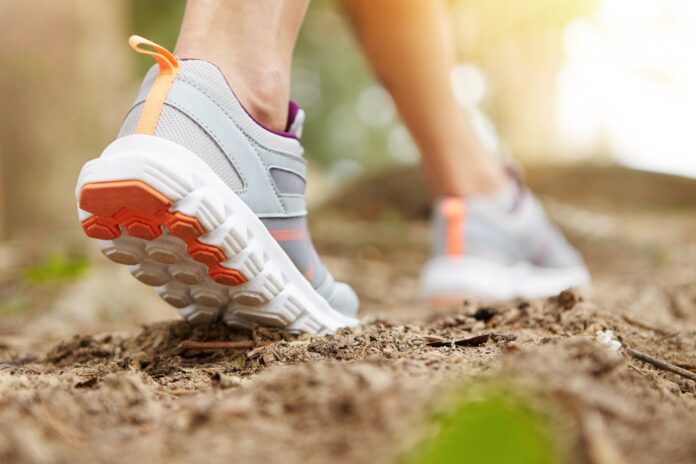A short stroll can significantly boost your outlook and mood while lowering your risk for a wide range of health issues. Discover how to gain from walking in this article.
A simple, slow paced walk has many noticeable benefits
Don’t be surprised if your doctor gives you a prescription to walk the next time you have a checkup. Yes, this common pastime is currently promoted as “the closest thing we have to a wonder drug” together with other regular types of physical activity.
Walking has a greater influence than almost any other widely available treatment on disease risk and a variety of health issues. Additionally, it is cost-free and virtually free of adverse effects.
Your risk of heart disease can be reduced by 30% by walking for 2.5 hours each week, or around 20 minutes per day. Additionally, it has been demonstrated that this do-anywhere, equipment-free workout lowers blood pressure and cholesterol, lowers cholesterol and blood sugar, and keeps your mind sharp.
Even a brief one-minute excursion is beneficial. Women’s risk of obesity decreased by 5% for every minute of brisk walking they conducted throughout the day. No more justifications of “I don’t have time”!
How to start and stick to a walking program
For years, you have been walking. If you have children, you assisted in their instruction. What in the world do you not understand about walking, then? You may discover there are several factors to take into account once you start walking for health. If there are no sidewalks in your neighborhood, where do you walk?
Below we’ll dive into many walking routines for beginners and different types of walking, where to walk and the health benefits of walking.
Walking is the perfect, low impact way to exercise
Have you ever vowed on January 1st to start exercising more only to discover that you lacked the time or the money to pay for pricey courses, classes, or gym memberships? You may have stayed off the field due to fears about injury. You might be able to stick by your resolution by going for a walk.
Here’s how walking could be your way to a healthy life:
We all know how to walk. Simply advance one foot before the other. There isn’t a learning curve like there would be if you started playing a new sport like tennis or Zumba.
It is possible anywhere. Go outside the front door. Go for a stroll after work. You can stroll through places you frequently visit, such as the supermarket, a mall, a house of worship, or the residences of friends and relatives.
Just some sneakers and you’re ready to go. It’s ideal to wear comfy shoes when walking for exercise, particularly sneakers. Still, that’s it! Although some types of clothes and equipment can enhance the enjoyment of walking, they are not necessary.
Your knees and the rest of your body will not be harmed by it. Walking is a low-impact workout that is kind to your joints since, unlike running, you always have one foot on the ground.
Walking is not only great for you, it’s also fun!
Some people find working out to be a chore. But there are many ways to treat yourself when you walk.
Walk with friends and have a chat. Invite your loved ones, friends, or coworkers to go for a stroll with you. It’s a fantastic chance to catch up with someone or get to know them better. Try having a difficult talk with someone while walking if you need to. Discussions can be simpler while you’re walking side by side because you’re less stiff than when you’re seated face to face.
Take advantages of some alone time benefits. There are many reasons and benefits of having alone time. Heading out by yourself can be a good way to escape the demands and expectations that occupy much of your time. As you stroll, you can clear your head, relax, and reflect. It can be valuable, quiet “me” time, allowing you to return refreshed.
Get out and soak up fresh air and nature. According to studies, spending time in green spaces or close to water might improve your attitude. A excellent approach to experience nature is by walking. Australia is full of many great parks, ovals and trails that are likely just within walking distance from you!
Get a different outlook on life with a slower pace. When you view the world at 5 kms per hour as opposed to 60 kms per hour, it looks different. You might come across a fascinating store, see a complex piece of architecture, or run across a friend.
Allow some time for creativity. When opposed to sitting, people produced twice as many original solutions to issues when they were walking. Another good reason to take a walking break throughout the workday is that the creative juices remained to flow even after they sat down after their walk.
Where to go for a walk
The convenience of walking allows you to do it almost anyplace. It depends on your safety and personal preferences where you walk. While some people like the climate control and security of indoor walking on a treadmill or at a mall, others prefer the fresh air and scenery of outdoor walking. Whatever your inclination, avoid getting into the habit of consistently walking in the same spot.
Whatever your inclination, the most crucial thing is that you walk regularly.
Where to walk outdoors for health
Around the block a few times. Simply leave through the front door. For convenience, that is unbeatable. If it’s unsafe to walk close to your home, think about walking in an area close to your office or other often visited places, such as the grocery store, a relative’s, or a friend’s house.
Around the city. Explore some of the bustling areas of your community or a nearby one on foot. Along the route, you can window shop or gaze at the architecture. Because they typically feature sidewalks and crosswalks to keep you safe, downtowns are ideal places to stroll.
Parks, ovals and walking tracks. According to studies, people walk more when they live close to parks or hiking paths. Avoid rough terrain and stick to flat or moderately rolling paths if you want to take a leisurely stroll. The ideal paths are those that are paved or packed with soil. If you’re up for breaking a sweat, you’ll get a more intense workout on trails with a steeper inclination without needing to increase your speed.
Where to walk indoors for health
Walk around a shopping center. The optimum time to get a good cardio workout at a shopping center is early, before the crowds arrive, even though you can walk about a mall whenever it is open. Use the stairs if your mall has more than one storey.
Walk around your living room or a different area in your home without too much clutter. If you weigh 180 pounds, standing still will burn roughly 250 calories in an hour. Try doing it as you watch your preferred TV program.
Walk around a gym or get on a treadmill. If owning a treadmill isn’t an option, you might want to think about joining a gym to have access to one, particularly during seasons when walking outside might be challenging in your location.
Some of the different walking techniques
Every walk is healthy for you. There are various ways to walk, though. You might need to experiment with a different style of walking, depending on your objectives. Here is a description of the various walking techniques and their potential advantages for you.
Casual, everyday walking. This includes strolling around your home or place of employment, going to and from your automobile, shopping, or any other incidental activities involving a brief amount of walking.
Walking for leisure. Examples of leisure walking include strolling while speaking with a buddy or walking the dog. You are at ease and moving effortlessly when strolling or taking a leisurely stroll. You could sing while walking because your effort is so minimal.
Walking for fitness. Walking in this manner is quicker and more deliberate. Although there are different levels of fitness walking, it generally involves moving at a quick speed. Even though your heart should be racing more quickly and your breathing should be deeper, you should still be able to speak in full sentences.
Interval paced walking. For this type of walk, you alternate fast walking for short periods
of time with equal or longer intervals of slower or moderate-paced walking to recover.
Nature walking or hiking. This is merely a stroll through the park or other natural area. There are many degrees of difficulty, much like with other sorts of walking, ranging from level, well-kept trails to steep, rocky routes marked with trail blazes that call for extra attention to make sure you stay on the correct path.
Nordic walking (those people with poles)
You’ll need a set of Nordic walking poles (or fitness walking poles) for this exercise. To make sure you have the right height and are using your poles properly, refer to the directions that came with them. If you are walking on concrete or asphalt, use the rubber tip. It is for walking on grass or soil that has a spike point.
As you begin to walk, swing your arms without holding onto the poles. The poles will hang and drag on the ground from the straps around your wrists. To reach roughly waist height, your arms should be stretched and swing naturally.
As you get used to this action, take a small hold of the pole as it advances and gently press the pole’s tip down and back into the earth. Open your hand and extend your arm behind you. Always keep the pole angled diagonally behind you. To relieve pressure on your joints, don’t plant the pole out in front of you like you would if you were hiking. Always keep your grip loose and apply pressure to the back swing with the straps. You will use more upper-body muscles when applying higher pressure.
Walking for mindfulness
This kind of walking aims to lower tension and increase present-moment awareness. You can reap the rewards of meditation without having to sit motionless by going for a “mindful” walk. There are several ways to go about it, from simply practicing mindfulness while walking to adhering to a more organized regimen. When you walk mindfully, you’re more aware of your surroundings, your thoughts, or your body’s physical sensations, like the breeze on your face or the way your foot rolls as it hits the ground from heel to toe.
The objective is not to walk faster or to obtain a greater workout like it is with many other styles of walking.
The emphasis is on de-stressing, slowing down, and unwinding.
To walking with mindfulness in mind, do the following:
Start by bringing your attention to the sensations in your body.
- Take a few calm, deep breaths through your nose. Feel the bottom of your lungs expand as opposed to merely the top.
- Utilize all of your senses. To fully appreciate each sensation, pay attention to every sight, sound, and touch.
- While taking a mindful walk, try these two variations:
- An easy, leisurely walk, breathing regularly, focusing on your breaths both in and out
- a leisurely, focused stroll. For 4–8 steps, while inhaling smoothly, match your breath to your steps. For the same 4 to 8 steps, exhale smoothly.
- You can find that you become less prone to getting caught up in concerns about the future or regrets about the past by learning to concentrate on the now.
We hope that the above information you’ll be able to get moving with knowledge of how to start an exercise routine around walking that you’ll be able to stick to and enjoy. Consistency is key!






























